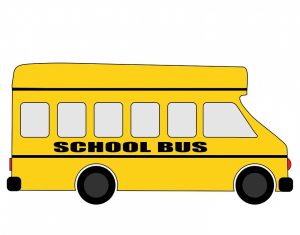
The wheels on the bus go round and round, known to be an American folk song, is one of the most popular kid’s rhyme. The song contains repetitive rhythm to make it simple and simple to learn as well as easy to sing for children.
2. Details about the Rhymes
– When the song was written
The lyrics of the rhyme was written in the year of 1939 in Boston, Massachusetts.
– Why the song was written
Though the exact reason for, why the song was written is not known many people believe that, the song was written to entertain children as they rode the bus, while it would travel in longer routes. The song would entertain the children at the same time convey the different functions of the vehicle.
3. Other Theories
– The melody of the song is based on another popular kid’s song “Here we go round the Mulberry Bush.”
– The song not only teaches different functions of a bus, in addition, children learn to perform associated hand movements.
4. What skills do children develop at the age 0-5 while interacting with the Rhyme?
While rhymes are the best way to support your child to develop the different type of skills, the wheels on the bus rhyme help to improve the “Gross Motor skills” of the child. Gross motor skills help a child to learn bigger movements, using the larger muscles like arms, legs, feet etc. This also helps to learn coordination, gestures, facial expression, and movements.
5. What topics does this rhyme help children ages 0-5 explore?
– As the rhyme mentions different functions of a bus, children learn and try to relate. for example- The baby on the bus go wah wah wah and the mummy on the bus say sssh, is something that every toddler relate to. Because the toddler years are the best time for cognitive and emotional development.
– People on the bus go up and down, the driver on the bus says move on back, these are the parts where a child of 3-5 years, learns about the social and behavioral development.
6. How can parents and teachers use this rhyme to foster educational experiences with children ages 0-5?
– From 12 month old to 24 months old, it is important for parents as well as teachers to make proper hand actions, gestures and facial expression while reciting the song or the rhyme in front of the child. This will help the child to develop the motor skills, understanding, and to imitate.
– From 24 month to 4 years old, sing the song properly with clear diction, accompanied by hand actions and facial expression. Encourage your child to sing with you make actions like you. At this age, toddlers start talking, understanding the surroundings, including the necessary development of the brain.
– From 4 years onwards encourage children to sing, make actions, and enjoy. Cause this is the time they learn and remember faster.